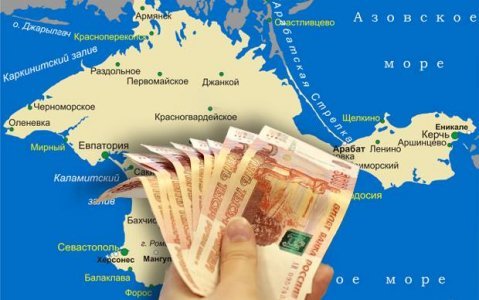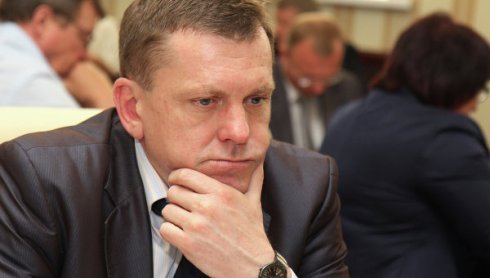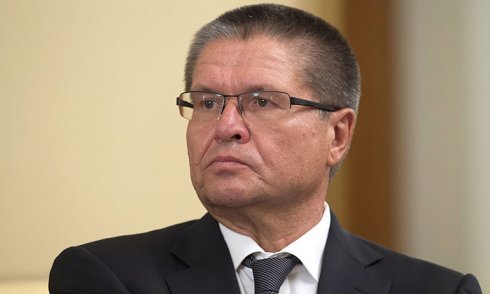 When Russia annexed the Ukrainian Crimea in spring 2014, Moscow has promised real wonders to its population: to build the roads, repair schools and kindergartens and restore enterprises. Crimeans listened these honey words enthusiastically expecting a comfortable life. But time is moving on, and the life of those people who participated in the referendum flying the tricoloured flags still doesn’t change for the better. The Russian “authorities” offer to wait once again while putting away the funding of investment projects on the occupied peninsula for later.
When Russia annexed the Ukrainian Crimea in spring 2014, Moscow has promised real wonders to its population: to build the roads, repair schools and kindergartens and restore enterprises. Crimeans listened these honey words enthusiastically expecting a comfortable life. But time is moving on, and the life of those people who participated in the referendum flying the tricoloured flags still doesn’t change for the better. The Russian “authorities” offer to wait once again while putting away the funding of investment projects on the occupied peninsula for later.
Crimea in Russian budget
In 2014, Crimea was financed from extra-budgetary funds, so the local people felt a significant inflow of money in their pockets that was especially nice along with the Ukrainian prices of goods in effect at that time.
However, already in 2015, expenditures on Crimea were included in the Russian budget with clear determination of the region’s funding. According to the original version of the budget of 2015, a share of federal financial injections into the peninsula’s budget was 50.7 billion rubles (about $900 million as of 1 January 2015) or 76% of the Crimean budget. In summer 2015, Crimean authorities understood that there were not enough allocated funds, especially for covering social needs – the salaries of doctors and teachers. Therefore, they applied for additional financial support to Moscow.
During the second half of 2015, the Crimean budget has been changed a few times with federal cash injections increased each time. As a result, the total amount of government’s subsidies reached 80.2 billion rubles ($1.1 billion as of 25 December 2015) by the end of the year.
Moscow considered estimating Crimean expenditures for 2016 more carefully and promised to allocate only 43.5 billion rubles (about $600 million) that accounted for 66% of the Crimean budget. The share of the federal government in the financing of Sevastopol was only 52% (8.8 billion rubles or $125 million).

Former “Minister” of Finance of Crimea Vladimir Levandovsky
In order to ensure that the situation of 2015 with a constant budget revision doesn’t occur again, the Kremlin decided to impose a number of restrictions on those Crimean officials who love money.
In particular, it was decided to divide all extra income earned in Crimea into two parts: local “authorities” can spend 70% of it at their own discretion and 30% will go to pay off federal subsidies for the peninsula. The federal government developed a special mechanism to minimize the budget adjustments.
“We found the following method: if we make adjustments and they (the Ministry of Finance of the Russian Federation – editor’s note) see that these expenditures are wrong planned, so this amount will be completely spent on repaying the subsidies, but if they see that there are objective reasons for this step, they will allow to save 50% for us and 50% will go to pay off,” the former “Minister” of Finance of Crimea Vladimir Levandovsky explained in autumn 2015.
These methods are used to prepare Crimea for becoming self-financing. However, the subsidized region used to receive subsidies from the government for 25 years– previously in hryvnas and now in rubles – is hardly capable to do that.
The Federal Target Program: billions that didn’t reach Crimea
In addition to transfers from the federal budget for occupied Crimea and Sevastopol, the Federal Target Program (FTP) for 2015-2020 was adopted in summer of 2014.
This Program provides for the allocation of more than 700 billion rubles (about $10 billion) to realize 650 projects on the Crimean peninsula. This includes the construction of roads, power transmission lines, water and sewage systems, schools, kindergartens, hospitals and many other facilities.

Minister of Economic Development of the Russian Federation Aleksey Ulyukaev
However, since the first days of 2015, there were problems with transferring funds to Crimea: one day the Crimean “authorities” made a mess of their calculations, another day the “Ministry of Crimean Affairs” was abolished in Moscow or the bureaucratic mechanism stood in the way. In total, according to local “authorities”, only 3.6 billion reached Crimea by the end of the year but the last tranche was transferred on December 30. It is clear that it was possible to disburse only a third of funds that came to Crimea – 978.8 million rubles. At the same time, the federal government reported that they disbursed a lot more – 22.6 billion of the planned 100 billion rubles.
“The disbursement of 22.6 billion rubles mainly in the first stage implied design and survey works, to a much smaller extent – construction and installation works,” the Russian Minister of Economic Development Aleksey Ulyukaev said during his recent visit to the peninsula.
In January 2016, the Directorate General headed by the former adviser to the Sevastopol “governor” Andrey Nikitchenko was established specifically to manage the implementation of the Federal Target Program. According to the plans of Moscow, this structure will consist of federal officials coming to Crimea to provide the methodological assistance to the local “authorities” with preparing the documentation.
In other words, Moscow specialists will come to teach careless Crimeans a thing or two. If there is a case they can’t teach – it is not their fault since the responsibility for the implementation of the Program still falls on the shoulders of Crimean occupation authorities.
Moreover, in order to keep the Crimean officials focused, Moscow prepared for them another unpleasant surprise in the form of the Agreement on the implementation of the Federal Target Program. According to the draft of this document, Crimean “authorities” will pay the money for each mistake. For example, if the terms of the Program are violated due to the fault of local officials (there can be no other guilty persons), the federal budget will stop to transfer the funds. If Crimeans don’t submit the report within the prescribed period, they will have to pay a penalty equal to 0.1% of the contract value, and if they submit the false information to the government, the penalty size will increase to 0.2% of the contract value.
There is no way to make it in time taking into account that Moscow has put a task to overcome a delay in 189 projects at once. It seems that they can calculate the penalty amount right now.
The most relevant question for Crimean officials is still the question of how much money the peninsula will get to implement the Federal Target Program. It is a high time for the most interesting part.
According to the head of the General Directorate for the Federal Target Program Andrey Nikitchenko, the government is ready to send 31 billion rubles ($800 million), but only if Crimea will prepare the necessary documents in compliance with all limits. However, the FTP’s budget provides for the allocation of 148 billion rubles in 2016. According to the reports on the Program’s implementation, a little less than 80 billion of unused funds should be saved since 2015. In other words, the amount of money for 2016 considering saved funds from the last year is more than 220 billion rubles (about $3 billion). If we subtract 23 billion rubles that Ulyukaev reserved for 2017 from this amount, there are about 200 billion rubles. However, only 31 billion rubles are planned to transfer to Crimea.
It is easy to guess that Crimea can hardly expect the realization of planned projects with this funding. Meanwhile, the federal government will be looking for scapegoats guilty of the “sabotage” of the construction of federal projects. Money will gradually go to the pockets of those, whom they were originally intended to, while Crimeans will continue to listen to the stories about the billions that Russia promised to send to the peninsula.
Sergey Marchenko
for Pod Pritselom












